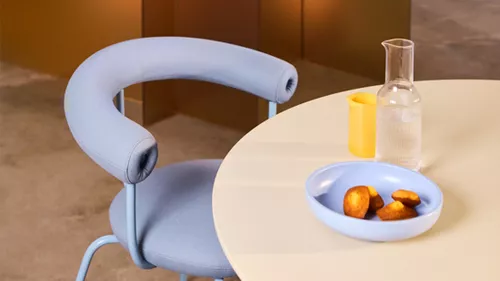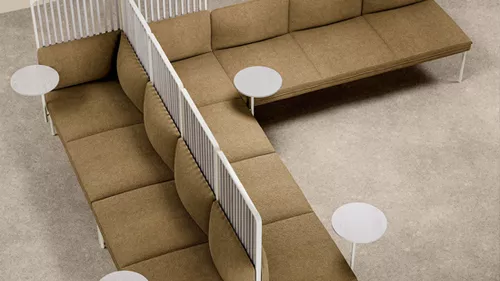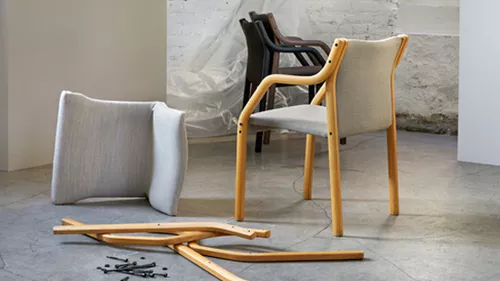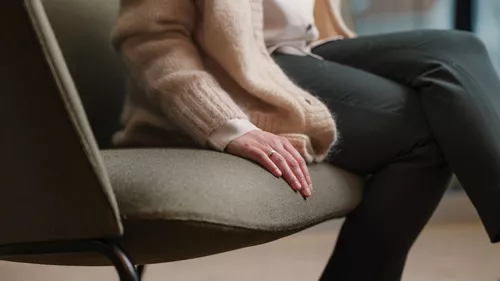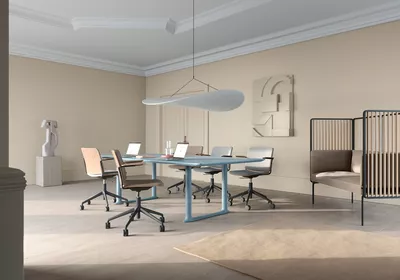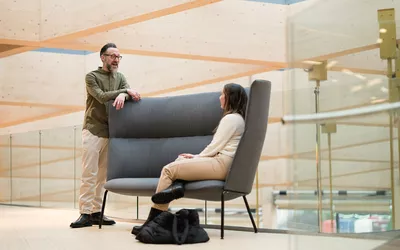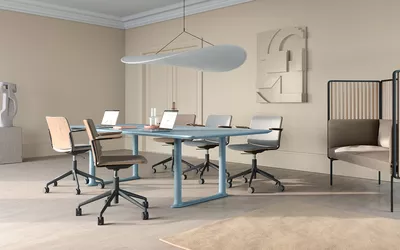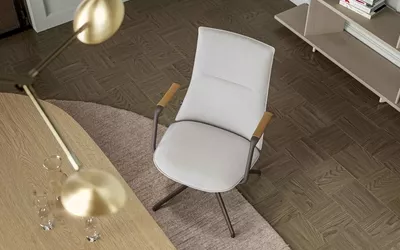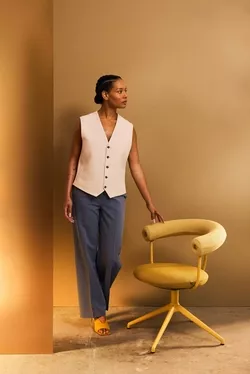Design conveys values
The Nordic countries are known worldwide for democratic processes that gives everyone at the table the mandate to speak their truth. A natural follow up question is whether furniture can convey this way of thinking?
Design often takes on the role as a communicator. Ask yourself what a conference room with high backs symbolizes, or a bookable meeting room with a sofa where you can conduct performance appraisal. How would the dynamic change if you were not sitting on opposite sides of a table? If tomorrow’s physical office space is centered around interacting with colleagues, maybe the desired values should be included when choosing furniture. By using the symbolism that each shape has as a tool to push a more inclusive agenda, you can achieve more than you know. Younger generations are more comfortable with sharing their opinions and this will influence organizations in the years to come. But are the designs supporting a diverse work force like this?
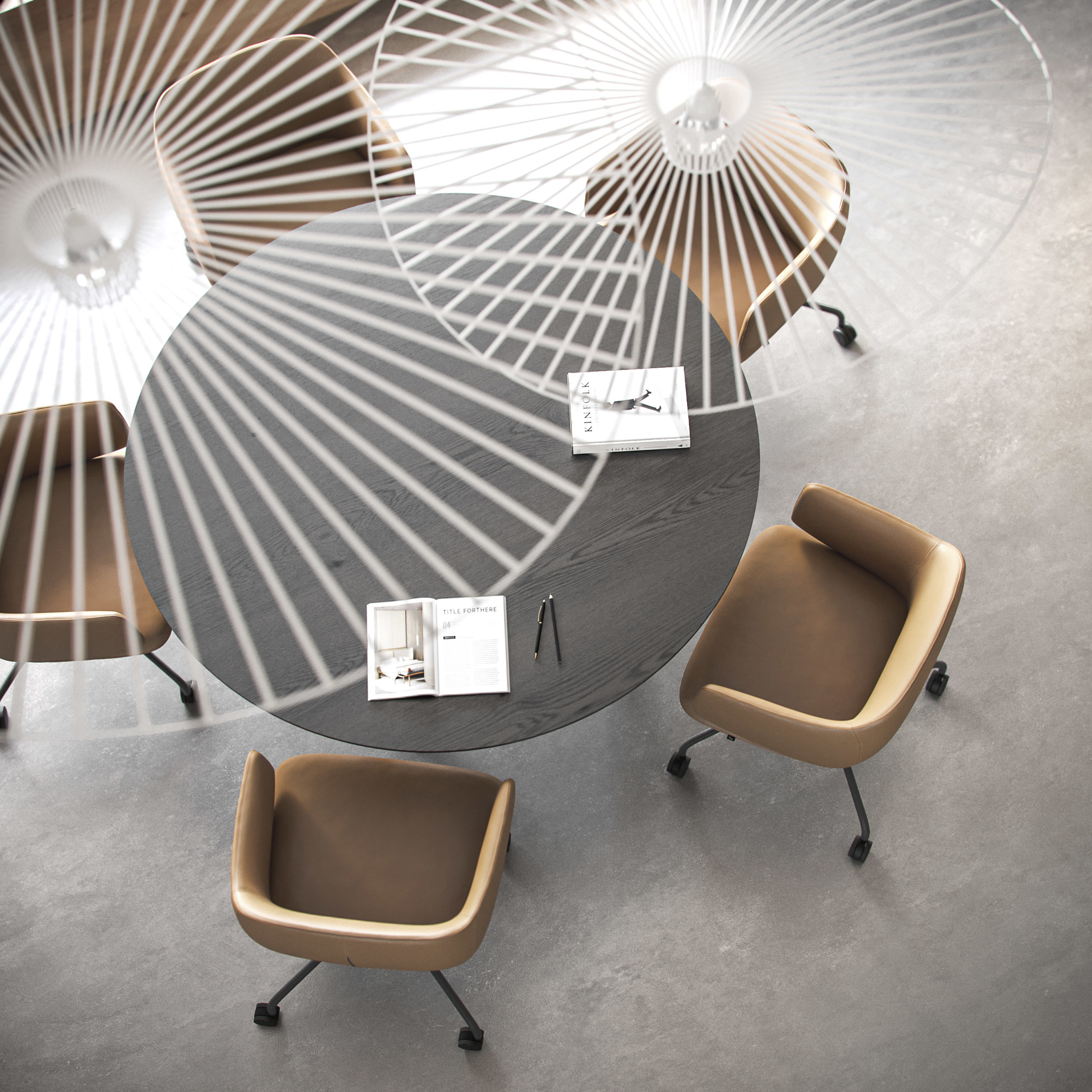
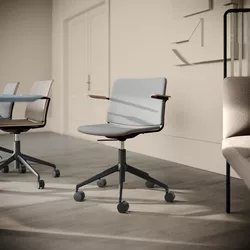
Formal meetings
High back chairs, gives you the illusion of an important and strong person sitting in the chair. Just take a look at our history. A throne always showed power, elevating the person sitting in the throne. One might ask if this is a symbol that serves modern organizations decision making processes and an egalitarian idea?
What happens if the person in charge does not sit at the top of the table? Or no one in the room for that matter. What happens if you round off the tables? A company that has a conscious idea when it comes to how the table's size and shape matter sends a strong message.
What happens if one does not have the option to sit at the “head of the table”?
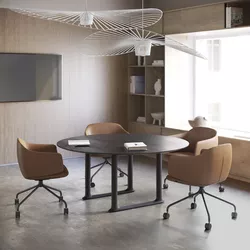
Having the ability to adjust one’s seat height could also empower. What happens to an employee whose feet can’t touch the floor; does this make the employee empowered to speak up?
There are no truths when it comes to these matters, in fact it is the purpose of a meeting that sets the criteria for the space. A careful mix of different options and a company guideline on when which meeting room should be utilized would help managers book the room with the right settings.
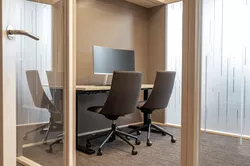
Project meetings
Project meetings are often set in smaller meeting rooms. If we add new work methods adapted during covid some of the participants could be working remote. Facilitating a set up that allows all participants to have equal opportunity to give input and participate is key. The physical design set up should allow the participants to interact with screens, this will reduce the discomfort of working remote and feel that you are not part of the meeting. Even if it's a smaller meeting, the room does not have to be small. Being in smaller rooms with others could give a congested feeling, and amplify a feeling of being trapped.
The physical design set up should allow the participants to interact with screens.
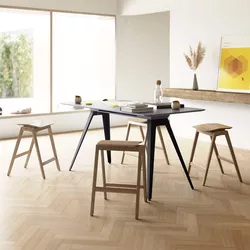
Creative meetings
Creative meetings are fundamentally a democratic meeting form and has several methodologies that supports all participants to be heard, seen, and acknowledged. The reason is that all stakeholders needs to be involved and engaged to solve problems. These meetings tends to start with getting all the ideas to the table. Then limiting them, and ensuring that all opinions are of equal value. Post-it notes is a great way for the facilitator to include everyone, no matter who had the idea.
Creative meetings are fundamentally a democratic meeting form.
